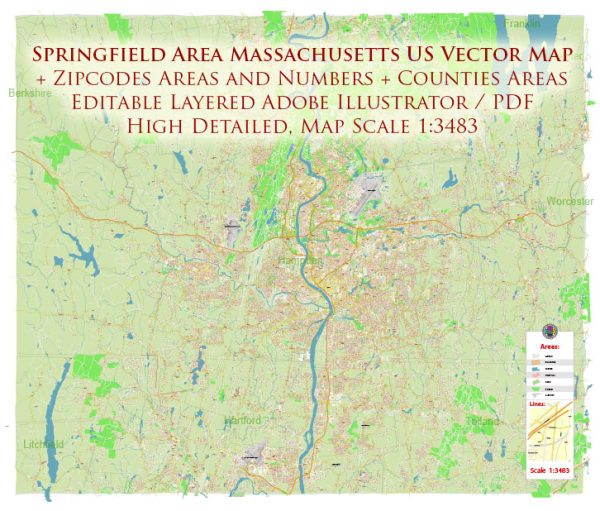The Springfield area in Massachusetts has a rich history of urban development that spans several centuries. The region played a significant role in the early settlement and industrialization of New England. Here is a brief overview of the key phases in the urban development of the Springfield area:
- Colonial Period (1636-1776):
- Springfield was founded in 1636 by English Puritan William Pynchon, making it one of the oldest cities in the United States.
- The settlement served as a strategic point on the Connecticut River, attracting fur traders and settlers.
- Springfield played a role in various conflicts, including King Philip’s War in 1675-1676.
- Industrialization (Late 18th to 19th Century):
- The 18th century saw the establishment of mills and manufacturing facilities along the Connecticut River, harnessing its water power for industrial purposes.
- The Armory, established in 1794, became a major center for the production of firearms, contributing significantly to Springfield’s industrial growth.
- Railroads and improved transportation infrastructure further fueled economic development during the 19th century.
- Growth and Prosperity (Late 19th to Early 20th Century):
- Springfield continued to thrive as an industrial center, attracting immigrants seeking employment in factories and mills.
- The city experienced a period of economic prosperity, marked by the construction of grand buildings, including the ornate Springfield City Hall and the W. Howard Block.
- Urban Challenges and Renewal (Mid-20th Century):
- Like many other industrial cities, Springfield faced challenges in the mid-20th century as industries declined, leading to economic hardships.
- The construction of highways and changes in transportation patterns impacted the city’s layout, contributing to suburbanization.
- Urban renewal efforts, including the clearing of older neighborhoods, were implemented to revitalize the city center.
- Modern Era (Late 20th Century to Present):
- The latter half of the 20th century saw efforts to diversify the economy and revitalize the city’s urban core.
- The establishment of educational institutions, such as Springfield Technical Community College, contributed to the city’s transformation.
- The MGM Springfield casino, opened in 2018, has been a notable development in the downtown area, contributing to economic revitalization.
- Cultural and Community Development:
- The Springfield Museums, including the Springfield Science Museum and the Museum of Fine Arts, showcase the city’s cultural heritage.
- Community initiatives and events, such as the Hoop City Jazz Festival and Bright Nights at Forest Park, contribute to the city’s cultural vibrancy.
Throughout its history, Springfield has undergone various phases of development, facing challenges and embracing opportunities for growth and renewal. The city’s rich industrial heritage, cultural institutions, and ongoing revitalization efforts continue to shape its urban landscape.


 Author: Kirill Shrayber, Ph.D.
Author: Kirill Shrayber, Ph.D.